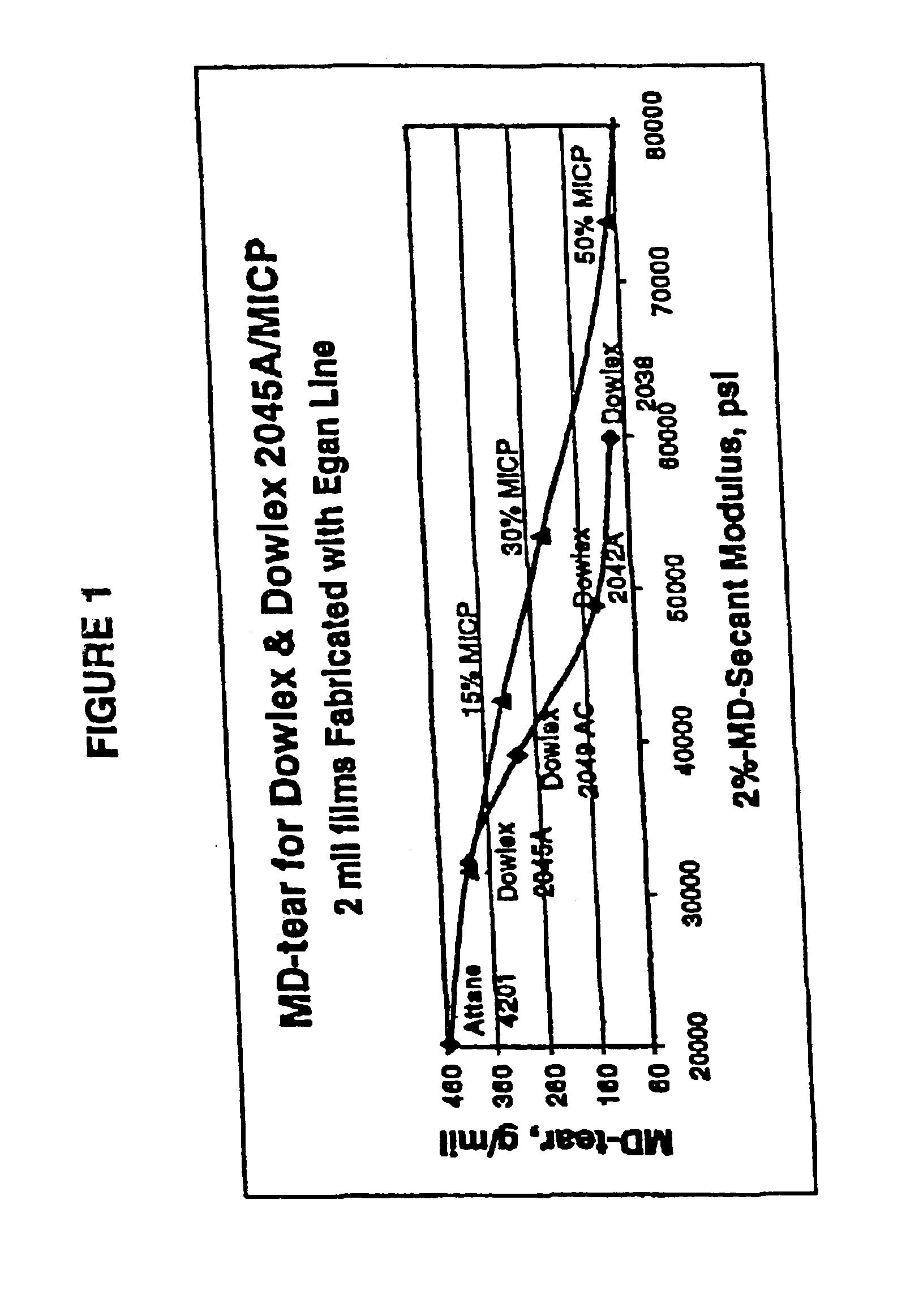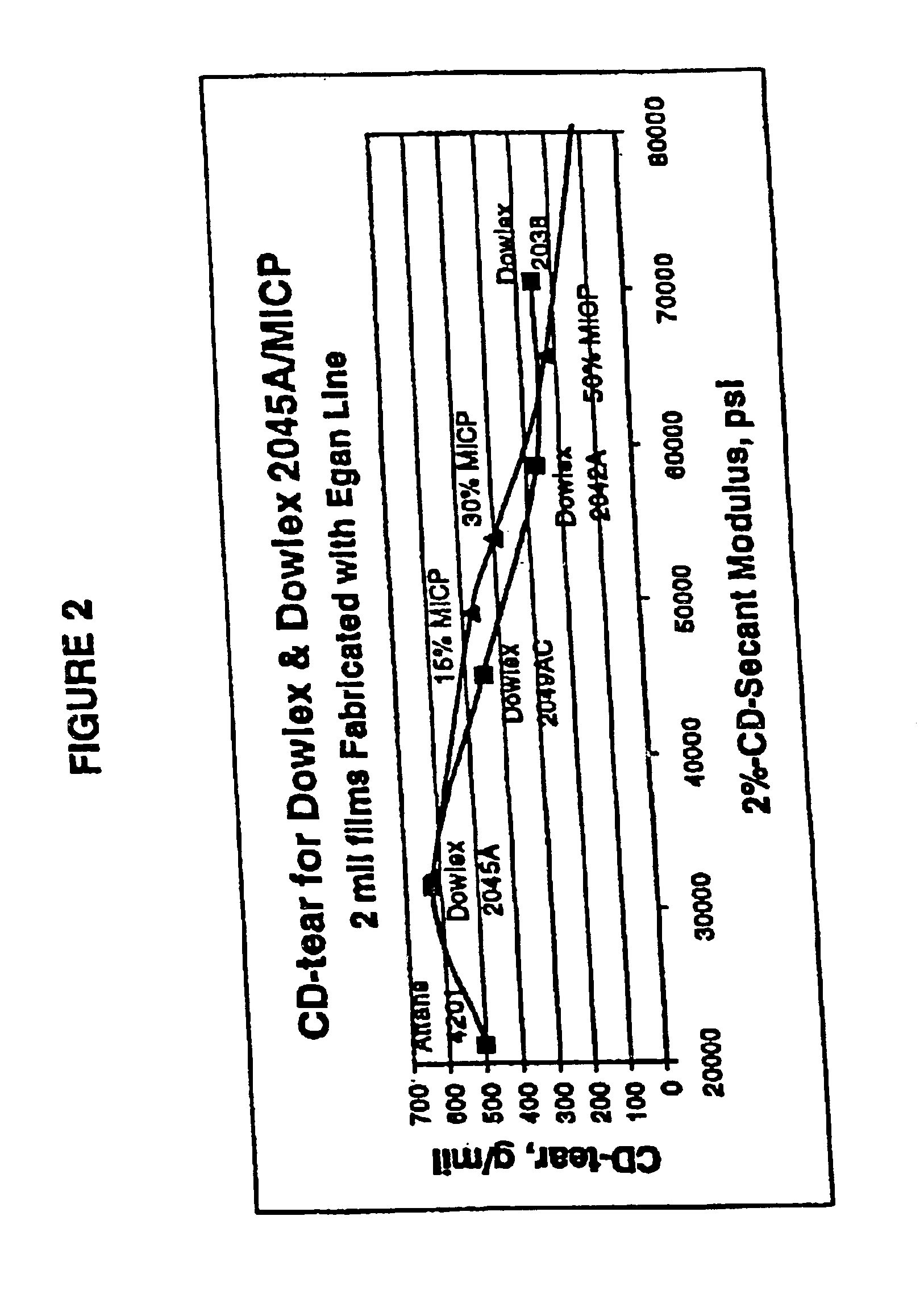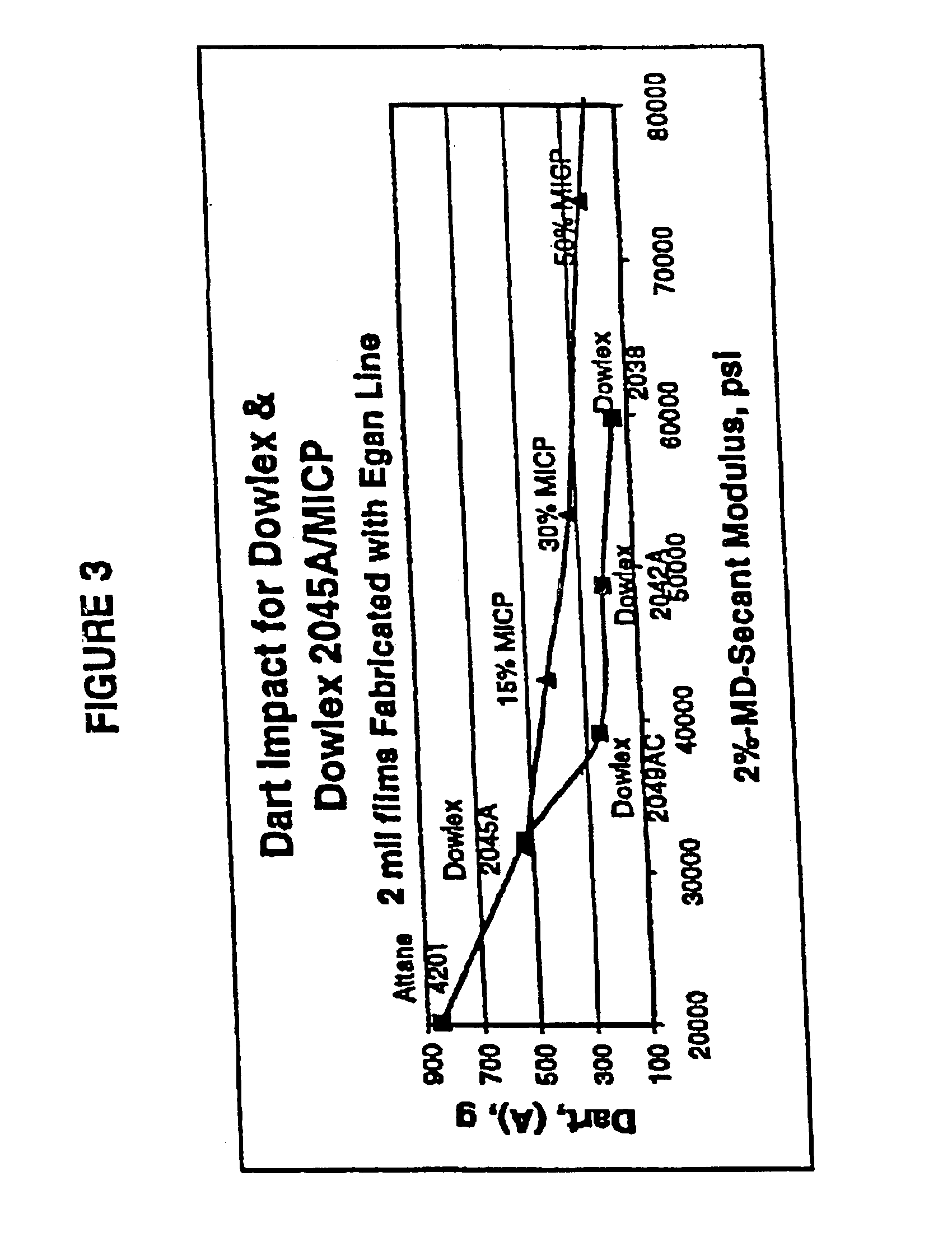Polyethylene rich/polypropylene blends and their uses
a polypropylene and blend technology, applied in the field of polymer blends and articles, can solve the problems of reducing toughness, limiting the possibility of downguaging the film, and lldpe being difficult to process at high rates, so as to maintain dimensional stability, improve blocking performance, and high modulus
- Summary
- Abstract
- Description
- Claims
- Application Information
AI Technical Summary
Benefits of technology
Problems solved by technology
Method used
Image
Examples
examples
[0082]The following examples are to illustrate this invention and do not limit it. Ratios, parts, and percentages are by weight unless otherwise stated. Examples (Ex) of the invention are designated numerically while comparative samples (C.S.) are designated alphabetically and are not examples of the invention. For the examples below, unless otherwise indicated: melt flow rate (MFR) is measured in accordance with ASTM D 1238, at a temperature of 230 C. under a weight of 2.16 KG; melt index (MI) is measured in accordance with ASTM D 1238, at a temperature of 190 C. under a weight of 2.16 Kg; Dart impact is measured in accordance with ASTM D-1709 (method A); Elmendorf tear is measured in accordance with ASTM D-1922 (type B); and Secant modulus is measured in accordance with ASTM D-882;.
[0083]Melt strength was measured by using a capillary rheometer fitted with a 2.1 mm diameter, 20:1 die with an entrance angle of approximately 45 degrees. After equilibrating the samples at 190° C. for...
examples 1-3
and Comparative Samples A-C
[0112]Moreover, iii another comparison, two polymer blends were prepared with MICP and Dowlex 2045A in weight ratios of 35:65 and 65:35 MICP:Dowlex 2045A, respectively. The MICP was prepared in a manner similar to that used for FIGS. 1 through 4. Films were fabricated from these blends on a blown film line consisting of a 2.5 inch diameter, 30:1 length to diameter (L / D) Gloucester extruder, equipped with a 6 inch diameter, spiral mandrel, and a blown film die. The die gap is 70 mil, frostline height is 35 inch and the output rate is 150 lb / h (68.2 Kg / h). The temperature profile utilized was 410, 420, 420, 420, and 420 F. (210, 212.8, 212.8, 212.8, and 212.8 C.) from the rear to the front of the extruder. The adapter temperature was 480 F. (248.9 C.), die temperature was 480° F. (248.9° C.) and the melt temperature was 500 F. (260 C). A dual lip air-ring was used to cool and stabilize the film during extrusion. Film was hauled-off and wound on conventional ...
examples 6 through 9
, and Comparative Sample F
[0128]Moreover, in another comparison, four polymer blends were prepared with MICP and AFFINITY 1140 (Ex. 6), ATTANE 4201 (Ex. 7), Polyethylene Blend A (Ex. 8), and DOWLEX 2045A (Ex. 9) in weight ratios of 35:65 MICP to the polyethylene polymers. The MICP was prepared in a manner similar to that used for FIGS. 1 through 4. Films were fabricated from these blends on a blown film line consisting of a 2.5 inch diameter, 30:1 length to diameter (L / D) Gloucester extruder, equipped with a 6 inch diameter, spiral mandrel, and a blown film die. The die gap is 70 mil, frostline height is 35 inch and the output rate is 150 lb / h (68.2 Kg / h). The film processing conditions were similar to the processing conditions used for Examples 1-3 and Comparative Samples A-C. The thickness, dart impact, Elmendorf tear, secant modulus and puncture resistance were measured with the results shown in Table 5.
[0129]The results shown in Table 5 are not directly comparable to the results...
PUM
| Property | Measurement | Unit |
|---|---|---|
| melt strength | aaaaa | aaaaa |
| height | aaaaa | aaaaa |
| melt strength | aaaaa | aaaaa |
Abstract
Description
Claims
Application Information
 Login to View More
Login to View More - R&D
- Intellectual Property
- Life Sciences
- Materials
- Tech Scout
- Unparalleled Data Quality
- Higher Quality Content
- 60% Fewer Hallucinations
Browse by: Latest US Patents, China's latest patents, Technical Efficacy Thesaurus, Application Domain, Technology Topic, Popular Technical Reports.
© 2025 PatSnap. All rights reserved.Legal|Privacy policy|Modern Slavery Act Transparency Statement|Sitemap|About US| Contact US: help@patsnap.com



